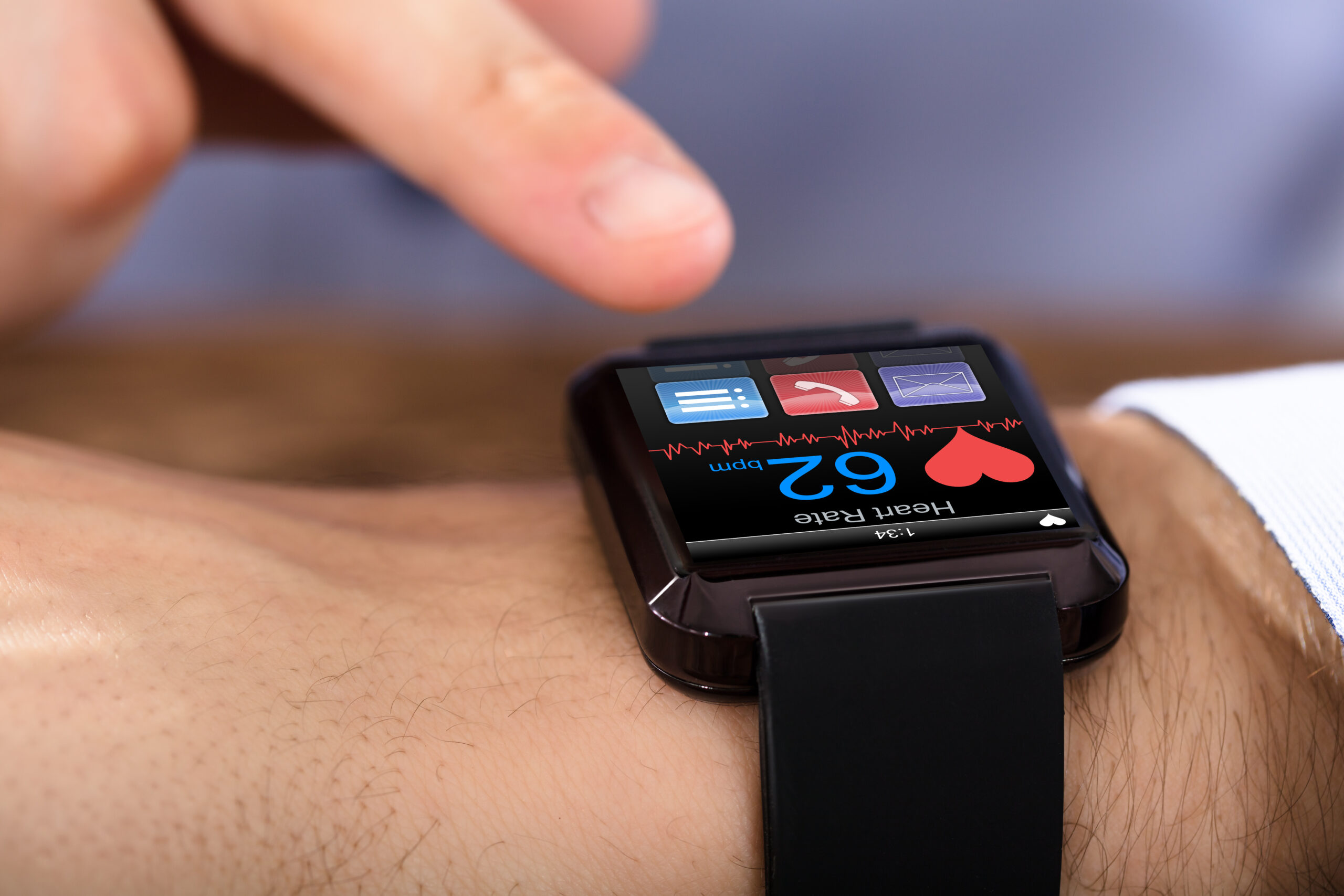It is a pivotal moment in India’s healthcare landscape. The health sector is experiencing rapid growth in internet-connected IOT wearable devices that provide real-time monitoring and analysis of vital health metrics. Companies like Xiaomi and Fitbit are leading the charge, empowering Indian consumers with insightful data like heart rates, sleep patterns, and activity levels. For a country with growing health consciousness amidst the accessibility of affordable tech, the rise of health-tracking IoT wearables signals an exciting shift. With these devices in hand, learn how the nation gain the power to take control of their own health and wellness.
The Rise of Health Monitoring IoT Wearables in India
As wearable technology has taken India by storm, fitness trackers and health monitors experience an upsurge in popularity. Affordable, connected devices provide individuals with insights into their health and encourage wellness.
1. Price and Accessibility
India is a price-sensitive market, and the affordability of devices is key to their widespread adoption. So, companies like Xiaomi and Zepp Clarity(former Huami) offer fitness trackers for under $30, making them accessible to a wider demographic. The low cost, combined with increasing internet connectivity and health awareness, has driven the rise of health-monitoring wearables.
2. Tracking Health and Wellness
These devices provide real-time health metrics like heart rate, blood pressure, sleep quality, and step count. The data gives users visibility into their health and fitness levels, encouraging lifestyle changes. Some devices also provide personalized health insights and recommendations to improve wellbeing over time. Since then, the appeal of health tracking and quantifying wellness resonate with many Indians seeking to take control of their health.
3. Partnerships and Innovation
Partnerships with healthcare providers allow users to share health data with their doctors, enabling better monitoring and care. Innovations in sensors, data analysis, and diagnostics also show promise for the early detection of diseases. Furthermore, several Indian startups are developing advanced health monitoring wearables, from devices detecting anemia to those monitoring chronic illnesses like diabetes.
The rise of health-monitoring wearables in India highlights the opportunity for technology to transform healthcare access and delivery. As devices become more advanced and partnerships with healthcare providers grow, wearables could play an important role in preventive care and managing the health of India’s citizens.
Top IoT Wearable Devices for Health Monitoring in India
1. Xiaomi Mi Band
Xiaomi’s Mi Band is one of the most popular fitness trackers in India. It monitors steps taken, calories burned, and sleep quality. The Mi Band provides comprehensive health insights to help users develop better habits and make lifestyle changes. With an affordable price, long battery life, and simple design, the Mi Band offers an easy entry point into health tracking.
2. Fitbit Charge
Fitbit is a leader in the wearable healthcare market, and their Charge devices tailor to the Indian market. The Fitbit Charge tracks steps, distance, calories burned, and sleep. It provides reminders to move and stay active, contributing to long-term health and fitness goals. For health-conscious individuals, the Fitbit Charge provides actionable insights to optimize health, fitness, and overall wellness.
3. GOQii Smart Band
GOQii’s Smart Band focuses on preventative healthcare by promoting lifestyle changes. It tracks basic metrics but also connects users to personal coaches and doctors for health consulting. The GOQii band takes a more comprehensive approach to health management. Users can get advice on nutrition, fitness, stress management as well as diagnosing potential health issues. For those looking to make meaningful changes to their health habits and behavior, the GOQii Smart Band provides guidance and accountability.
4. Other options:
There are other health monitoring wearables in India like the Amazfit Bip, Samsung Galaxy Fit, and Honor Band. As this market grows, wearables are becoming more advanced, accurate, and affordable. For health-conscious Indians, wearable devices provide an easy way to gain valuable insights into health metrics, develop better habits, and access healthcare guidance, all contributing to long-term wellness. Overall, health monitoring wearables are poised to greatly benefit public health in India.
Benefits of Using IoT Wearables for Health Monitoring

I. Improved Health Monitoring
- IoT wearables provide continuous health monitoring by tracking metrics such as heart rate, blood pressure, sleep patterns, and physical activity. These metrics provide users with insights into their health and fitness levels, enabling them to make better lifestyle choices. The data collected can also help identify potential health issues early and monitor the progression of chronic conditions.
II. Increased Health Awareness
- The insights provided by IoT wearables increase users’ awareness about their health and motivate them to make positive lifestyle changes. By tracking metrics like daily step count and calories burned, users can set health goals and stay accountable. The gamification of fitness through leaderboards and challenges further engages users. This awareness and motivation can inspire long-term behavioral changes towards better health.
III. Preventive Healthcare
- Continuous health monitoring enables preventive healthcare by identifying health risks early. Changes in metrics like elevated heart rate or irregular sleep patterns can indicate potential issues, allowing users to consult doctors promptly. Preventive care can help avoid health crises, reduce medical costs, and enable early treatment. For chronic conditions like diabetes and heart disease, IoT wearables provide a convenient way to monitor health metrics in between doctor visits.
While IoT wearables show promise for health monitoring and preventive care, they also raise privacy concerns regarding access to personal health data. Strict data privacy and security regulations can help address these concerns, enabling individuals to benefit from this technology with greater confidence and trust. Overall, IoT wearables are poised to transform healthcare in India by making health monitoring more accessible, engaging users in their wellness, and enabling preventive care.
Challenges With Wearable IoT Health Monitoring System in India
1. Data Privacy and Security
- With the increase in the adoption of health monitoring wearables, concerns around data privacy and security have emerged. These devices collect and store sensitive personal health data, which could potentially be accessed by unauthorized parties if not properly safeguarded. Strict data protection laws like the General Data Protection Regulation (GDPR) in Europe aim to give users more control over their data. However, India currently lacks a comprehensive data protection law, exposing users to risks of data breaches and misuse.
2. Accuracy and Reliability
- The accuracy and reliability of health metrics tracked by wearable devices have been questioned. Studies have found that heart rate monitors, step counters and sleep trackers can be imprecise. Errors and inaccuracies in the data could provide users with misleading insights into their health and fitness levels. This underscores the need for companies to improve the precision and dependability of their tracking technologies through ongoing testing and calibration.
3. Limited Functionality
- Most wearable health devices available in India offer limited functionality, primarily focused on fitness tracking. They do not diagnose or monitor medical conditions, unlike more advanced wearables approved for medical use in regulated markets. The medical wearable segment in India is still nascent, though increasing investment in health technology and a growing burden of chronic diseases could drive future adoption of regulated medical wearables.
4. Affordability
- While prices of health monitoring wearables have declined significantly, many advanced fitness trackers and medical wearables remain unaffordable for much of India’s population. Companies must work to develop low-cost devices with customized features for the Indian market if these technologies are to benefit users across income levels. Partnerships with healthcare providers and insurers could also improve access to health wearables through subsidies and incentive programs.
With strong growth potential, wearable health devices can transform healthcare delivery in India if key challenges around data protection, accuracy, functionality, and affordability are addressed. Close collaboration between companies, healthcare institutions, and policymakers will be required to leverage the opportunities of this technology while safeguarding the interests of users.
The Future of IoT Wearables for Health Monitoring in India
I. Increasing Adoption
- The adoption of health-monitoring wearable technology in India is poised for significant growth in the coming years. As these devices become more advanced and affordable, consumers are gaining awareness of the benefits of proactively tracking health metrics. Companies like Xiaomi and Fitbit are driving increased access to fitness trackers and smartwatches that provide insights into steps taken, calories burned, heart rate, and sleep quality. With a growing middle class concerned about wellness and longevity, the market for self-monitoring health wearables in India is expanding rapidly.
II. Integration with Healthcare
- There is potential for health-monitoring wearables to be integrated into India’s healthcare system. As these devices become more sophisticated, they can detect irregular heartbeats or other potential health issues, alerting users to consult their doctors. Physicians may eventually have access to patient data from wearables to gain a more holistic view of their health and make more informed diagnoses and treatment plans. However, there are significant privacy and security concerns regarding the sharing and storage of personal health data that must be addressed through legislation and policies before large-scale integration.
III. Personalized Healthcare
- In the long term, health monitoring wearables may enable personalized healthcare in India. By tracking an individual’s health metrics over extended periods of time, these devices can establish personalized baselines and profiles for users. Deviations from these profiles could be used to predict health issues and prompt people to make lifestyle changes or seek medical advice before a condition becomes severe. Personalized healthcare has the potential to reduce costs and improve health outcomes. However, it relies on access to comprehensive health monitoring data and systems that can analyze this data to derive actionable health insights for individuals. Significant investments in research and technology infrastructure will be required to unlock the possibility of personalized healthcare in India through IoT health wearables.
In summary, while health-monitoring wearables present promising opportunities to improve wellness and healthcare in India, there are a number of technical, regulatory, and social challenges to overcome before they can be adopted at scale. With continual innovation, as well as public and private sector support, these devices may ultimately transform how individuals access healthcare resources and manage health in India.
To Summarize…
You have seen that health monitoring wearables are gaining traction in India, providing individuals with valuable insights into their health and well-being. With companies continuing to innovate and drive down costs, these devices look set to become a mainstay in the country. Their data could even help policymakers and the healthcare sector gain population-level insights and make more informed decisions. For you as a user, wearables offer an easy way to track your health and fitness goals. As the technology improves and becomes even more accessible, it will be exciting to see just how far-reaching the impact could be.
More Stories
Starlink and OneWeb Gear Up to Transform South Korea’s Telecom Terrain
South Korea is entering the low Earth orbit (LEO) satellite communications field with strong government support for SpaceX’s Starlink & Eutelsat OneWeb.
Apple Unlocks Its AI: Developers Get a Passport to On‑Device Intelligence
At WWDC 2025, Apple has unveiled a transformative shift in its approach to artificial intelligence, offering developers unprecedented access to its on-device AI models through the innovative Apple Intelligence framework.
CrowdStrike and Microsoft Unite to Harmonize Cyber Threat Attribution
CrowdStrike and Microsoft aim to harmonize the fragmented landscape of cyber threat attribution. Historically, varied naming conventions often muddled threat intelligence. This collaboration aims to standardize terminology.
GCash and Open Fabric Launch NFC Payments in the Philippines
GCash and Open Fabric revolutionize the payment experience in the Philippines with NFC as they launch a groundbreaking Tap to Pay feature.
Sisense Intelligence: Transforming Data into Action with Generative AI
Sisense Intelligence offers a seamless experience, allowing you to interact with data using natural language and generate insightful dashboards without the need for complex coding.
TikTok Empowers Users with AI-Driven Content Control Tools
TikTok is advancing digital content with AI-driven tools that give you more control over your viewing experience. On June 3,...


